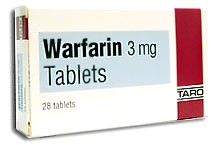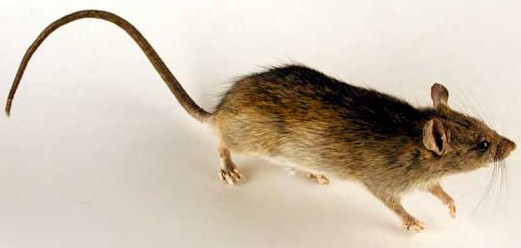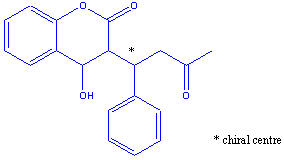|
IntroductionAnticoagulants are medications that delay the coagulation of blood. They are sometimes referred to as "blood thinners". Some anticoagulants in use are acenocoumarol, dicoumarol, heparin and warfarin.Warfarin is probably the best known and most widely used oral anticoagulant. It is a non-habit forming medication used to limit the size of existing blood clots and to prevent formation of new blood clots in high-risk patients. Two chemical names for warfarin are
and its chemical structure is shown below.
As observed from its structure, warfarin
exists as a pair of chiral enantiomers.
It is marketed as a racemic mixture of
its sodium salt under the brand names Coumadin® (USA) and Marevan® (UK) and as its generic
version Warfarin Sodium. The salt is
very soluble in water and freely soluble in alcohol. Coumadin® is sold as coloured
tablets, each colour indicating the strength of the
dose.

Another large application of warfarin is as rat poison, or, more technically, as a rodenticide. It is very effective in controlling Norway (Brown) rats and house mice. As rat poison, it comes in water-soluble, ready-to-use bait, concentrate, powder, liquid concentrate , nylon pouch and dust formulations. 
Brown Rat ( Rattus Norvegicus) |
